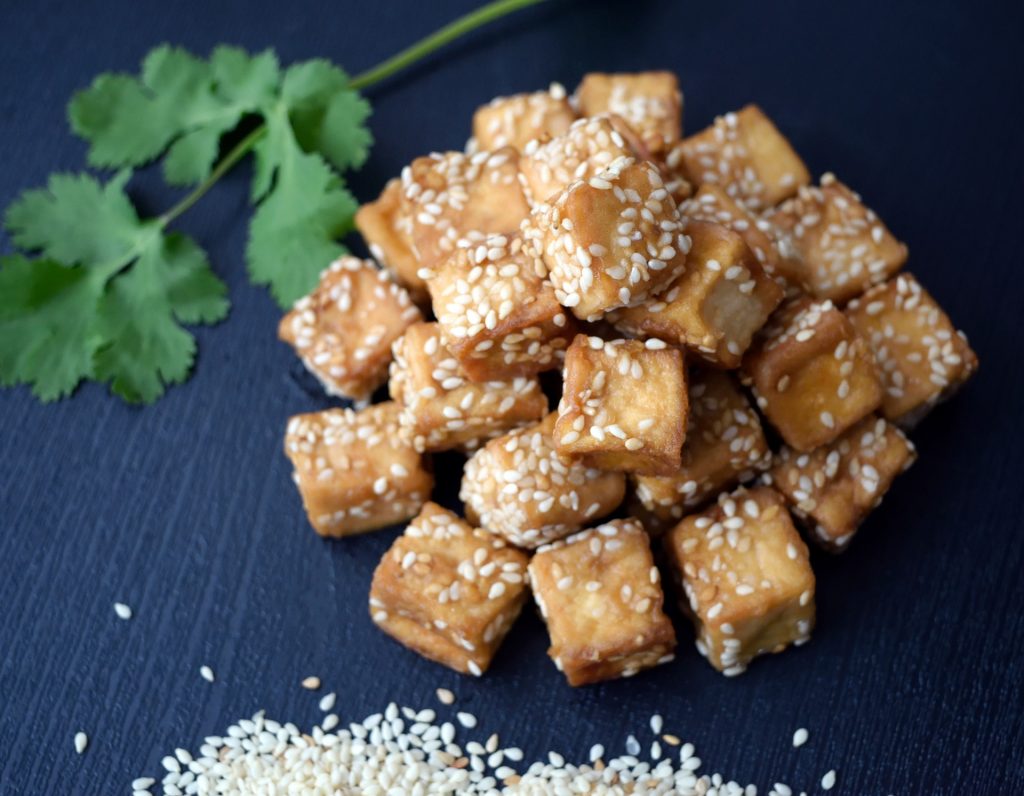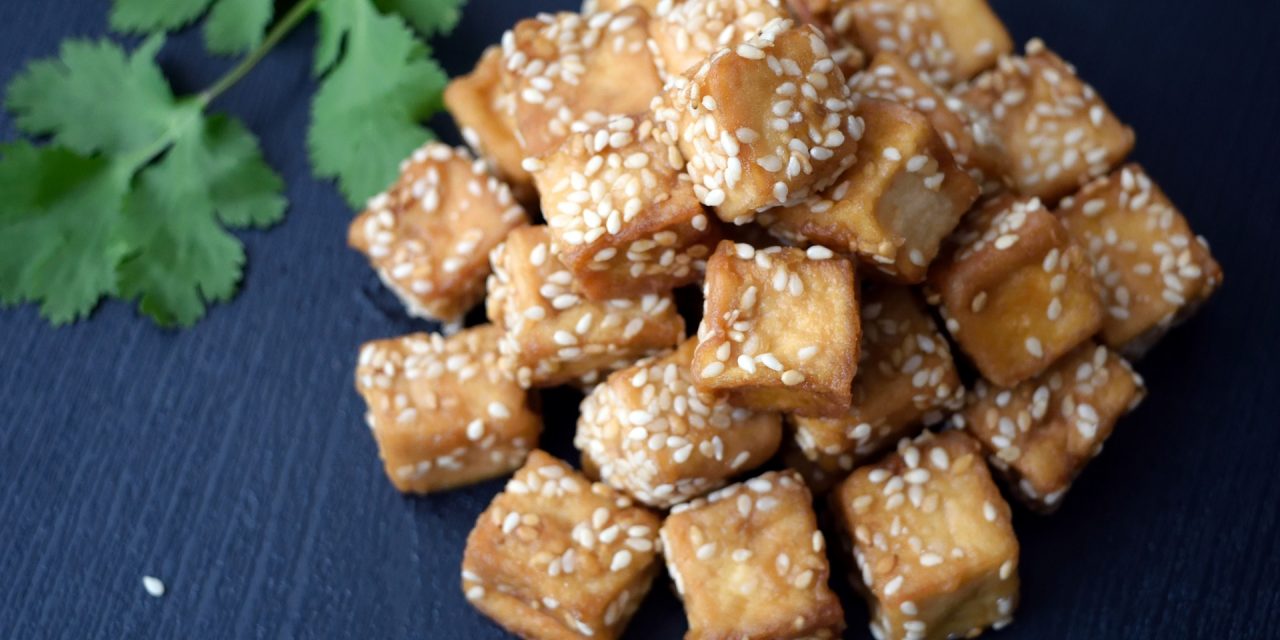Beans, chickpeas, buckwheat , quinoa and many other plant based foods provide protein as well as things like tofu, seitan, textured vegetable protein, and tempeh. What are these unusual forms of protein and where do they come from?
What are these protein sources?
• Tofu – This is also called bean curd. It is created by the coagulation of soya milk. Then the coagulated soya milk is pressed into curds that look like blocks of white soft cheese. Tofu can be baked, fried, or grilled.
• Textured vegetable protein or TVP – This is a protein source made by taking the fat out of soya flour and used to extend or replace meat in various recipes. It contains more protein per pound that most meats.
• Seitan – This is often referred to as mock duck or wheat meat. It is made from washing all the starch out of wheat flour so that you are left with a substance that is brown in colour, resembles and is chewy like meat. It can be baked, grilled, or fried in a pan. It cannot be used for anyone with a gluten allergy.
• Tempeh – This is a soya product, which is made by taking cooked soybeans and fermenting them. Unlike Tofu, it has a firm, yet chewy texture, which is softer and squishier. Its nutty flavour makes it a good choice when stir-fried, breaded, grilled, or baked.
These food sources are beneficial as protein sources in the plant based diet. Some can be a little bland to eat (especially if you are used to the salty fatty taste of animal products) however you infuse them through the marinating or cooking process with the flavours of various sauces. One of the reasons these plant proteins work so well in various dishes is they absorb flavours that are added during the cooking process very well.
Nutritional Facts
They tend to be lower in calories than meat sources of protein and are much lower in saturated fat when compared to meat.
1/2 Cup Tofu Calories 94
Total Fat 6 g
Saturated fat 0.9 g
Polyunsaturated fat 3.3 g
Monounsaturated fat 1.3 g
Cholesterol 0 mg
Sodium 9 mg
Potassium 150 mg
Carbohydrates 2.3 g
Dietary fiber 0.4 g
Protein 10 g
1 Cup Tempeh
Calories 320
Total Fat 18 g
Saturated fat 3.7 g
Polyunsaturated fat 6 g
Monounsaturated fat 5 g
Cholesterol 0 mg
Sodium 15 mg
Potassium 684 mg
Carbohydrates 16 g
Protein 31 g
1/2 Cup TVP
Calories 160
Calories from fat 0
Total Fat 0g
Cholesterol 0mg
Sodium 4mg
Carbohydrates 14g
Dietary Fiber 8g
Sugars 6g
Protein 24g
1 Ounce Seitan
Calories 104
Calories from fat 5
Total Fat 1g
Sat. Fat 0g
Trans Fat 0g
Cholesterol 0mg
Sodium 8mg
Carbohydrates 4g
Dietary Fiber 0g
Sugars 0g
Protein 21g
How are these products used?
These non-meat foods can be used in a variety of ways. For example, tofu, tempeh, and seitan can be used chopped into cubes and stir-fried with vegetables, along with seasonings that are absorbed.
Textured vegetable protein is crumbly and can be used as a hamburger substitute or as an extender for animal products in casseroles or stir-fried with vegetables.
Tempeh and seitan can be cooked in slabs on the grill, especially when marinated with sauces and spices that infuse flavor. Barbecue-flavored and teriyaki-flavored seitan and tempeh are available to be used on the grill to mimic steaks.
Seitan has the consistency of chicken so it can be cut up and used in any recipe that calls for chopped chicken, such as stir-fry, fajitas, and casseroles.
Health Benefits
• These products are high in protein and low in fat, making them good foods for everyone who needs low calorie, low fat options to replace meat.
• They contain soya or wheat alternatives to meat and are high in phytoestrogens and other nutrients found in plant based foods.
• They contain no saturated fat, which makes them low in cholesterol and other fats that can clog your arteries and cause heart attacks or strokes.
• They can be used to replace meat and contain as much protein as meat and sometimes more. When cooked with vegetables, these products help meals to be well balanced in both carbohydrates and protein.





